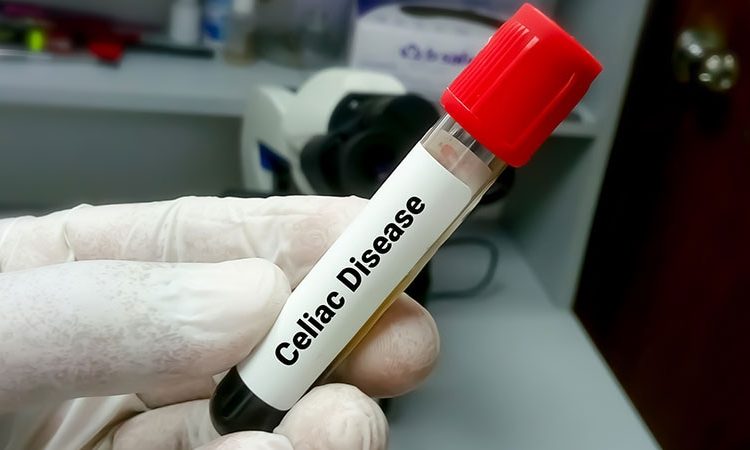TOPLINE:
For adults with suspected celiac disease who do not have immunoglobulin A (IgA) deficiency, diagnostic bowel biopsy can most likely be avoided if the serum anti-tissue transglutaminase IgA (tTG-IgA) level is low.
METHODOLOGY:
Researchers evaluated the reliability of serum tests for diagnosing celiac disease, as defined by duodenal villous atrophy (Marsh type 3 or Corazza–Villanacci grade B).
The main study cohort included 436 adults with suspected celiac disease who did not have IgA deficiency and who were not on a gluten-free diet (mean age, 40 years; 68% women). The patients were referred by 14 centers across four continents to undergo local endoscopic duodenal biopsy.
Local serum tTG-IgA was measured with 14 test brands. Concentration was expressed as a multiple of each test’s upper limit of normal (ULN). Tests were defined as positive when they exceeded 1 times the ULN.
Histology was assessed by the local pathologist, and discordant cases were reevaluated by a central pathologist.
TAKEAWAY:
Positive serum tTG-IgA was detected in 363 (83%) participants; negative serum tTG-IgA was detected in 73 (17%).
After local review, 341 of the participants with positive serum tTG-IgA had positive histology (true positives) and 22 had negative histology (false positives).
Of the 73 participants with negative serum tTG-IgA, 66 had negative histology (true negatives) and seven had positive histology (false negatives).
Central reevaluation of duodenal histology was performed in 29 discordant cases, resulting in 348 true positive cases, 15 false positive cases, 66 true negative cases, and seven false negative cases ― the equivalent of a positive predictive value of 95.9%, a negative predictive value of 90.4%, a sensitivity of 98%, and a specificity of 81.5%.
The positive predictive value of local serum tTG-IgA increased when the serologic threshold was defined at increasing multiples of the ULN. The test correctly diagnosed duodenal villous atrophy in 97.5% of patients with serum tTG-IgA concentrations greater than 10 times the ULN.
IN PRACTICE:
“The results of this multicentre prospective study indicate that a no-biopsy approach for the diagnosis of coeliac disease is safe and reliable in adult patients without IgA deficiency and with serum tTG-IgA greater than the assay-specific upper limit of normal,” the authors write. “We found no evidence that important comorbidities would be missed by adopting a no-biopsy strategy.”
SOURCE:
The study was led by Carolina Ciacci, Centre for Coeliac Disease, AOU San Giovanni Di Dio e Ruggi d’Aragona, Salerno, Italy, and was published online September 8 in The Lancet Gastroenterology and Hepatology.
LIMITATIONS:
Limitations include a lack of data on IgA-deficient participants, a low number of participants in some subgroup analyses, a lack of data for many ethnic groups, limited follow-up information, limited assessments in the central laboratory, and high pretest probability of celiac disease (low number of participants without duodenal villous atrophy).
DISCLOSURES:
The study had no specific funding. One co-author is an employee of Werfen. The other authors have disclosed no relevant financial relationships.
Follow Marilynn Larkin on X: @MarilynnL.
For more news, follow Medscape on Facebook, X, Instagram, and YouTube.
Source: Read Full Article
